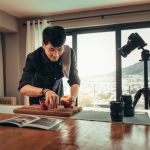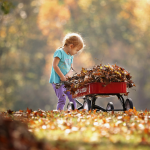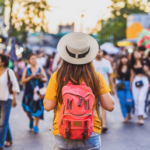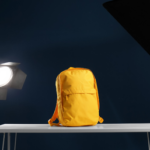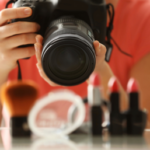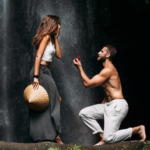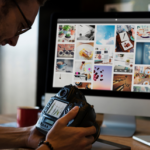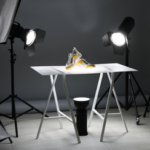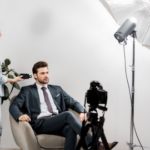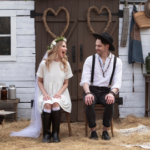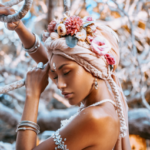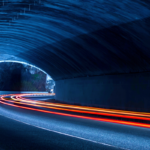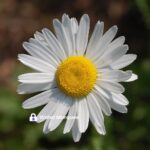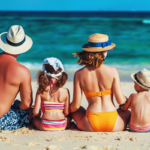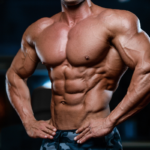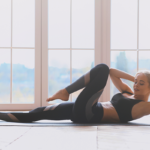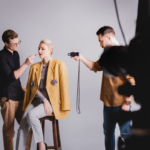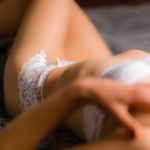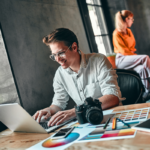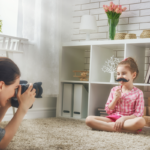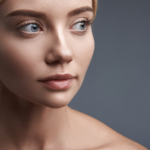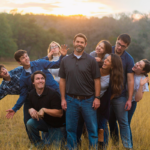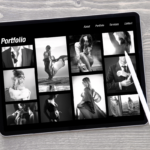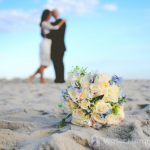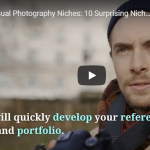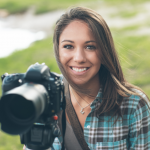14 Pieces Equipment- Every ‘New’ Photographer Needs
Are you considering commencing photography as a business?
If you’re reading this article, you are probably a budding photographer who is considering pursuing your passion and beginning a photography business. You may have a tripod and a few lenses, but you wonder if that’s enough and what gear you might need to make it as a professional.
Photography is a great activity to get into, and if you’re committed to mastering the art, it can even blossom into a fulfilling career. It isn’t exactly cheap though, and with the vast number of options available, knowing what you need to get going doesn’t need to be overwhelming.
This is why we will go over all – you need to get started with photography in this post.
Although the list may sound a bit overwhelming, don’t forget that you can sometimes get ‘used’ equipment for a cheaper price-tag. Several people who move on to intermediate level will be eager to get rid of their basic gear, and this could significantly reduce your costs. Here are the best –
Equipment Every New Photographer Needs
- Camera
Of course, the camera is the most important piece of your equipment. Your best bet here is a quality yet affordable DSLR, and thankfully these cameras are dropping in price every day. For some $300 to $500, should enable you to invest in one. You can even save on a great camera by buying a used (but still working) one.
Such cameras take great pictures, and you’ll be able to add to it, a wide variety of gadgets, including image stabilization to help you perfect your skills. Both Canon and Nikon are popular brands that are available in a variety of different price ranges.
- Camera strap
Lens belts are of great use. These straps provide a safe and comfortable way to transport your camera without having to carry the entire camera pack. The surprising thing about camera belts are, there are millions you can choose from, and generally, they are inexpensive so you can buy a bunch of them to match your look. There are of course some that are very expensive, like those for expert photographers that want more than just ‘a message on fashion’.
What do we recommend? The Black Rapid Sport RRS-1BB Sling Strap is our pick for the best functional camera strap. This is perfect for those photographers who need a cushioned strap that is comfortable to wear for extended periods of time, even when they are carrying a heavy and bulky camera, getting ready for a quick, perfect shot.
- Camera bag
There’s no point in funding thousands of dollars in camera equipment just to put it in a dusty drawer or to bring it around in an old gym bag.
You would want to invest in something that’s durable and heavy-duty enough to make your equipment easy to hold and transport around with you.
In general, there are three camera storage options:
- Pelican shell;
- Backpack; or
- Messenger bag.
While the safest solution for keeping your gear is a pelican bag, it’s also the toughest day-to-day to lug around.
For us, there is the ease of security right up there, which is why we choose to use a backpack preferably than a messenger bag over the shoulder. Another thing to consider is that if you need to access your gear quickly, or if you want to look less like you are carrying expensive equipment around, you might prefer a messenger bag.
- Lenses
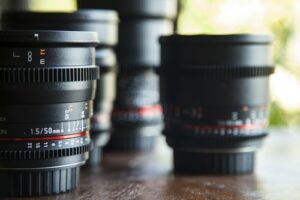
If photographers snap very interesting shots that you can’t seem to do, it’s probably partly due to their variety of available lenses. You also have to know how to choose the right lens for the correct situation, of course, but picking up a number of beautiful lenses will help you determine which ones are suitable for each topic. Although discovering some tips can help you out, do not stop exploring both!
Nonetheless, it should be remembered that not all lenses are made equal. Usually, the models in the camera kits are of lower quality. Buying just the camera without accessories and then investing in lenses of better quality than you want would actually serve you better than a package. Here are some of the most popular varieties you could choose from.
Kinds of Lenses
- Fisheye Lens (for panoramas, scenic images and skyscapes)
- Macro Lens (for up-close photography – think flowers and butterflies)
- Telephoto Lens (far away shots, perfect for wildlife and sports photography)
- Wide-angle lens (good for landscapes and architectural shots)
- Wide-opening lens (good for portraits and nighttime shots)
Although lenses can be pricey; the good news is that you will not have to buy them in one go. Alternatively, pick up the type of lens that suits the type of photography you would like to do the most, and then you can gradually add more lenses to your collection later as required.
- Lighting
Good lighting makes for good photographs. Unfortunately, natural light situations are not always available or suitable, and you may need some artificial light sources to produce your art on film. There are many ways to accomplish this; you’ll need to decide what kind of photography you’re going to do – to choose the right lighting.
The aim is to go for bright, natural bulbs that do not make overbearing light. But you also need a system that suits in with the scenario.
- Lightbox setup
If you are searching in a studio for images of items or small still life scenes, then a lightbox may be the way to go. This is a small, controlled area which helps you to change the lighting situation to suit your needs. Nevertheless, it’s only suitable for a small number of applications.
- Manual flash
If you are filming outside, it is ideal to use a manual flash. This tool is lightweight and easy to carry, and that makes it ideal for pictures where you need to get the shot fast. If you do action shots or photography of wildlife in poor light conditions, you may benefit from using them.
- Continuous lighting kits
These are the studio-style kits mostly used for film shooting or still life. If you intend to shoot a series of images or clips at one location, you will use this, and you need to be able to set up the ideal lighting situation. If you are a portrait photographer or a YouTuber, then you would probably want to invest in this device.
- Tripod
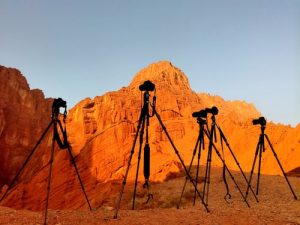
Shaky hands aren’t good when taking great pictures, and a tripod is a great way to make things right. There are many options for this, and when space is limited, you’ll probably want to invest in full size and a tabletop version, too.
- Photo editing applications
Like it or not, most of the images’ elegance actually happens even after they have been captured. You will take your pictures from ‘meh’ to ‘wow’ by investing in a good photo editing suite! Even though an editing program won’t be making you a good photographer, it can assist you in getting the best out of your masterpieces.
It’ll take you some time to learn how to practice photo editing, but there are lots of free online resources. Adobe Lightroom is the most popular choice here, and if you go with this option, you’ll be able to get plenty of support. You can completely change the shot you took with these apps, or adjust it to look exactly like your eyes saw it.
Everybody involved in shooting raw images knows these kinds of photo editing apps are important. Get those programs for yourself, watch some tutorials on YouTube and play around. You’re not going to regret it.
Check out Water Marquee-it’s free for simplified needs like watermarking your pictures before you share them online!
- Computer
Odds are you have one of those, too. Most new computers should be able to smoothly run software and suites for photo editing. Which means you can use it to edit your images from almost any smartphone, including Mac, Windows, ios, iPad, Android, and even Linux computers.
- External drive
Think of a hard drive outside as insurance. Although it may not be directly beneficial at the moment, if your machine unexpectedly crashes, maintaining a gallery of backed-up pictures will give you peace of mind. That being said, any wise photographer should have one of two backups on hand.
External hard drives, apart from stability, are just plain useful. As the cameras’ output quality continues to improve, image files are increasing in size and take up more space.
Additional storage
We recommend the portable HGST Touro S Drive. The truth is there are lots of viable options out there. But, keep in mind that it is possible to fit tens of thousands of RAW image files on a single drive with an additional terabyte of space.
- Reflector
If you do not want to use a flash and you’re striving for more natural lighting, the ideal solution is reflectors. Reflectors reflect the light on the shadowed places, as the name suggests. Just change the reflector angle to shine a light on the dark location or subject then you’re ready to shoot some stunning pictures. These are easy to use, simpler than highlights, and the images appear more realistic because you are using natural light reflections.
- Cleaning kits
Debris, humidity and dust can get into the body, lenses, and accessories of camera. In the worst-case scenario, your pricey camera and lenses could be permanently damaged.
When you ignore the maintenance of your camera, then you make the costliest mistake.
And, with a cleaning kit, you will know the exact way to clean the camera gear properly. Photography involves a combination of experience, education, and talent, but as important as other things, is maintenance.
One of a photographer’s most important duties is to keep the lenses in great condition and to maintain lenses must always be on top of your list.
Keep in mind that this is a basic list. Photography is an extremely diverse form of art, and the equipment you need depends heavily on what kind of photography you want to take. If you have some favourite artists, then be sure to check their images for the feedback! Many of them are simply going to tell you what type of equipment they use to get their shots.
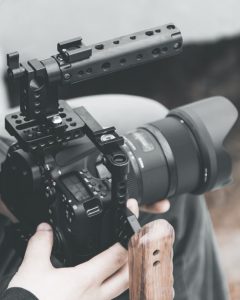
How to choose a perfect camera
If you want some technical tips as a novice on “how to choose photography equipment,” we’ll help you here.
Buying a professional camera is a hard decision to make. The amount you are spending on it can be costly for you. The initial step in choosing a camera relies on the budget being practical.
Then you should learn the types according to your necessity, such as DSLR (Digital Single-Lens Reflex) Point-and -shoot-Compact Mirrorless SO. The budget camera has its advantages depending on the style you select.
So there are some things you need to consider when you purchase a camera:
- Decide your kit budget
- Choose how often you will use the camera
- Pick a DSLR to control the entire process of taking photographs
- Purchase a point-and-shoot camera if you want an easy-to-use, cheap camera for portability and relatively high-quality select mirror with fewer cameras. If you wish a cheap, high-quality option, select an analog camera.
- Select and buy a specific brand.
- We suggest you contact other professional photographers for suggestions and recommendations.
How to choose the best beginner lens
The key part of the camera is the use of the right lens. To achieve the perfect shot, a perfect lens can make or break your shot.
Optimizing the use of interchangeable lenses on the camera will transform the pictures from amateur to professional. Therefore, you need to carefully pick your lens because not every lens fits for everyone.
We realize that the right lens will transform the whole image and also boost your ability, so here’s the guide to buying the right lens:-
Remember: The Lower the Number, the Wider the Shot
The Higher the Number, the Greater the Zoom
Try this out before you take that card out and make a purchase!
And remember, adding creating your own watermark and adding it to your online photos provides protection against someone using your photos without your permission. Try watermarking here at WaterMarquee.


